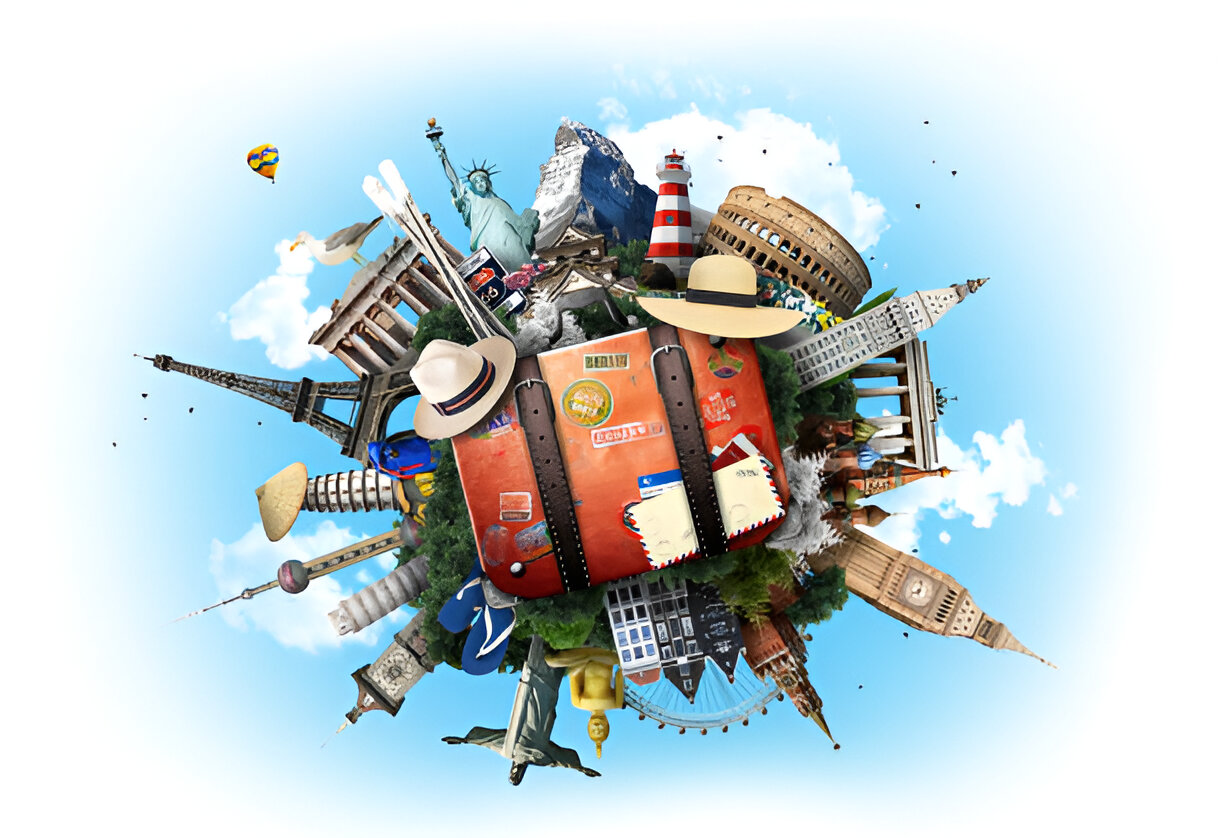“Backpacking Across South America: Discovering Cultures, Conquering Challenges, and Finding Myself.”
Introduction
Backpacking across South America was a transformative journey that opened my eyes to diverse cultures, breathtaking landscapes, and the resilience of the human spirit. From the vibrant streets of Buenos Aires to the ancient ruins of Machu Picchu, each destination offered unique lessons about adaptability, connection, and the importance of stepping outside my comfort zone. This adventure not only deepened my appreciation for the continent’s rich history and natural beauty but also taught me invaluable skills in navigation, budgeting, and interpersonal communication. Through encounters with locals and fellow travelers, I discovered the power of storytelling and the shared experiences that unite us all, making this journey an unforgettable chapter in my life.
Cultural Diversity: Embracing Local Traditions
Backpacking across South America offers an unparalleled opportunity to immerse oneself in a tapestry of cultural diversity, where each country presents a unique blend of traditions, languages, and customs. As I traversed the continent, I quickly realized that embracing local traditions was not merely an enriching experience but also a vital aspect of understanding the intricate social fabric that defines each region. From the vibrant festivals of Brazil to the indigenous practices in the Andes, the cultural richness encountered was both profound and enlightening.
One of the most striking aspects of South American culture is its indigenous heritage, which remains deeply rooted in the daily lives of many communities. For instance, in Peru, the Quechua and Aymara peoples maintain their ancestral customs, which are evident in their clothing, music, and agricultural practices. Engaging with local artisans in Cusco, I learned about the significance of traditional weaving techniques that have been passed down through generations. These intricate patterns not only serve as artistic expressions but also tell stories of the land and its people, reflecting their history and beliefs. This experience underscored the importance of preserving such traditions in a rapidly globalizing world.
Transitioning from the highlands of Peru to the coastal cities of Colombia, I encountered a different yet equally captivating cultural landscape. The vibrant city of Cartagena, with its colonial architecture and Afro-Caribbean influences, showcased a fusion of cultures that has shaped its identity. Participating in local dance classes, I discovered the rhythms of cumbia and salsa, which are not just forms of entertainment but also a means of storytelling and community bonding. This interaction highlighted how music and dance serve as vital conduits for cultural expression, allowing individuals to connect with their heritage while also inviting others to partake in their celebrations.
Moreover, the culinary traditions across South America reveal another layer of cultural diversity. Each region boasts its own unique flavors and ingredients, often influenced by indigenous practices and colonial history. In Argentina, for example, the tradition of asado, or barbecue, is more than just a meal; it is a social event that brings families and friends together. Sharing a meal in this manner fosters a sense of community and belonging, illustrating how food can transcend mere sustenance to become a vital part of cultural identity. Similarly, in Bolivia, I was introduced to the concept of “pachamama,” or Mother Earth, which is celebrated through various rituals and culinary practices that honor the land and its resources.
As I continued my journey through the diverse landscapes of South America, I became increasingly aware of the importance of respecting and embracing local traditions. Engaging with communities, participating in their customs, and listening to their stories not only enriched my travel experience but also fostered a deeper understanding of the complexities of cultural identity. This realization prompted me to reflect on the significance of cultural exchange in a world that often prioritizes homogenization over individuality.
In conclusion, backpacking across South America has been a transformative experience that illuminated the continent’s rich cultural diversity. By embracing local traditions, I gained invaluable insights into the lives of the people I encountered, fostering connections that transcended language and geography. This journey has reinforced the notion that cultural diversity is not merely a backdrop to travel but a vital component that enriches our understanding of humanity itself. As I reflect on my experiences, I am reminded of the importance of celebrating and preserving these traditions, for they are the threads that weave together the vibrant tapestry of South America.
Navigating Terrain: Tips for Hiking and Transportation
Backpacking across South America offers an unparalleled opportunity to immerse oneself in diverse landscapes, cultures, and experiences. However, navigating the varied terrain can be both exhilarating and challenging. Understanding the intricacies of hiking and transportation is essential for any traveler seeking to explore this vibrant continent. One of the first lessons learned is the importance of preparation. Before embarking on a hike, it is crucial to research the specific trails and regions. South America boasts a range of environments, from the arid Atacama Desert in Chile to the lush Amazon rainforest. Each area presents unique challenges, such as altitude sickness in the Andes or navigating muddy paths in tropical regions. Therefore, equipping oneself with knowledge about the terrain, weather conditions, and potential hazards can significantly enhance the hiking experience.
In addition to preparation, investing in the right gear is paramount. Quality footwear is essential, as it provides the necessary support and protection for long treks. Hiking boots should be well-fitted and broken in before the journey begins to prevent blisters and discomfort. Furthermore, layering clothing is advisable, as temperatures can fluctuate dramatically throughout the day, especially in mountainous regions. A lightweight, waterproof jacket can be a lifesaver when unexpected rain showers occur. Additionally, carrying a reliable backpack that distributes weight evenly can alleviate strain on the body, allowing for a more enjoyable hiking experience.
As one navigates the trails, it becomes evident that hydration and nutrition play critical roles in maintaining energy levels. Carrying sufficient water is vital, particularly in arid regions where dehydration can occur rapidly. Utilizing a hydration system or water bottles that are easy to access can encourage regular drinking. Moreover, packing lightweight, high-energy snacks such as nuts, dried fruits, and energy bars can provide the necessary fuel to sustain one’s stamina during long hikes. It is also wise to familiarize oneself with local food sources, as many regions offer unique culinary delights that can enhance the overall experience.
Transportation in South America presents its own set of challenges and opportunities. While hiking allows for a deep connection with nature, understanding how to navigate between destinations is equally important. Public transportation options, such as buses and trains, are often available and can be a cost-effective way to travel. However, schedules may not always be reliable, and delays can occur. Therefore, it is advisable to remain flexible and patient when relying on public transport. Additionally, considering alternative modes of transportation, such as shared taxis or rideshare apps, can provide more direct routes to desired locations.
Moreover, engaging with locals can offer invaluable insights into the best transportation options available. Many residents are familiar with the nuances of their region and can provide recommendations on the most efficient and safe ways to travel. This interaction not only aids in navigation but also enriches the travel experience by fostering connections with the local culture.
In conclusion, navigating the terrain of South America while backpacking requires a combination of preparation, the right gear, and an understanding of transportation options. By prioritizing these elements, travelers can enhance their hiking experiences and explore the continent’s breathtaking landscapes with confidence. Ultimately, the lessons learned from navigating South America’s diverse terrains contribute to a deeper appreciation of its natural beauty and cultural richness.
Budgeting Wisely: Managing Expenses on the Road
Backpacking across South America is an exhilarating experience that offers a unique blend of adventure, culture, and breathtaking landscapes. However, one of the most critical aspects of this journey is managing expenses effectively. Budgeting wisely can make the difference between a fulfilling trip and a financial burden that overshadows the experience. As I navigated through various countries, I learned several key strategies that helped me maintain a balanced budget while still enjoying the richness of the continent.
To begin with, understanding the local currency and exchange rates is essential. Each country in South America has its own currency, and fluctuations in exchange rates can significantly impact your budget. Before embarking on my journey, I took the time to research the currencies of the countries I planned to visit, which allowed me to make informed decisions about when and where to exchange money. Additionally, I found that using local ATMs often provided better rates than currency exchange booths, although I remained cautious of any fees associated with withdrawals.
Moreover, accommodation choices played a pivotal role in managing my expenses. While it can be tempting to opt for hotels, I discovered that hostels and guesthouses not only offered more affordable rates but also provided opportunities to meet fellow travelers. Many hostels feature communal kitchens, which allowed me to prepare my meals, further reducing food costs. By prioritizing budget accommodations, I was able to allocate more funds toward experiences such as guided tours and cultural activities, enriching my journey without overspending.
Transportation is another significant expense that requires careful planning. South America boasts a variety of transportation options, from buses to trains, each with its own price range and comfort level. I learned that booking long-distance bus tickets in advance often resulted in lower prices, while also allowing me to secure a seat on popular routes. Additionally, I took advantage of local transportation, such as subways and buses, which are typically much cheaper than taxis. By embracing public transport, I not only saved money but also gained a more authentic experience of daily life in the cities I visited.
Food expenses can quickly add up, but I found that exploring local markets and street food stalls offered delicious and affordable options. Sampling traditional dishes from vendors not only satisfied my hunger but also provided insight into the local culture. I made it a point to ask locals for recommendations, which often led me to hidden gems that were both budget-friendly and flavorful. This approach not only enhanced my culinary experience but also allowed me to connect with the communities I was visiting.
Lastly, it is crucial to maintain a flexible mindset when it comes to budgeting. Unexpected expenses can arise, whether due to changes in travel plans or unforeseen circumstances. By setting aside a contingency fund, I was able to navigate these challenges without derailing my overall budget. Additionally, I kept a daily log of my expenses, which helped me stay accountable and adjust my spending habits as needed.
In conclusion, budgeting wisely while backpacking across South America is an essential skill that can enhance the overall experience. By understanding local currencies, choosing budget accommodations, utilizing affordable transportation, exploring local cuisine, and maintaining flexibility, travelers can manage their expenses effectively. Ultimately, these strategies not only allow for a more enjoyable journey but also create lasting memories that transcend financial constraints.
Conclusion
Backpacking across South America taught me the importance of adaptability, cultural appreciation, and the value of human connections. The diverse landscapes and rich histories of each country highlighted the beauty of exploration and the lessons that come from stepping outside of one’s comfort zone. Ultimately, the journey reinforced the idea that travel is not just about the destinations, but about the experiences and relationships formed along the way.




